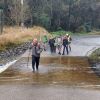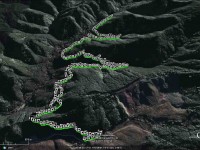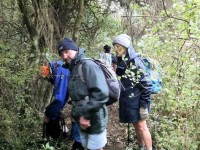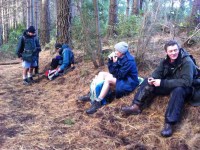Starting from a whare of stones, built by Mr Birnie in 1857 at the junction of Whare Creek and the Silverstream, the settlement at Whare Flat consisted manly of Scots, nearly all of whom spoke Gaelic. The first school opened in 1868 in a ‘but’ and ‘ben’ with Mr Neil McLeod as the teacher. The earliest roll call has a strong highland flavour: Macmillans, McQuilkans, Camerons, Kays, McDoalds, McInnesses, McLachlans, Jollys, McKenies, Leishmans, Pages, McRaes, McIntyres, Andersons, Hays, Thomsons, Rollinsons, Lambs, Lennies, Dodds, Gilchrists.
Later, the present wooden schoolhouse and school were built and Mr Robert Leishman, who owned the only bullock dray in the valley carted all the timber. This one-class, sole-charge school had 42 pupils at one time before it closed in 1943 and the pupils came from as far as Strath-Taieri and boarded in the valley during the week. The building was the centre of social, educational and religious life of the community and on Sundays public worship was held there by preachers from Knox Church and later from North Taieri Church, with Dr Stuart presiding on special occasions.
The first southern exit from Dunedin was by Halfway Bush along the Silverstream to North Taieri so that this settlement, with its two flax-mills and rope works, was until about 1860 a busy highway. Travellers would be mainly on foot, carrying heavy loads as bullocks and horses were scarce. Stock for the farms was driven this way from Port Chalmers and Dunedin where it was landed from Australia and thousands of sheep passed each year at shearing time to and from the woolshed on Flagstaff. About 100 diggers set to work on the surrounding hills when gold was discovered at Darkie’s Gully and there was said to be an illicit still at Powder Creek. In the mid 1870s however, the Dunedin Corporation took over the whole area as a watershed and the settlers gradually moved out as the trees were planted. – “Taieri Buildings” 1970 by Daphne Lemon
 26/06/2024. Whare Flat. Hikers. Grade 2.5. 11km. Leaders: Bruce Spittle, Adrienne Ensor.
26/06/2024. Whare Flat. Hikers. Grade 2.5. 11km. Leaders: Bruce Spittle, Adrienne Ensor.


